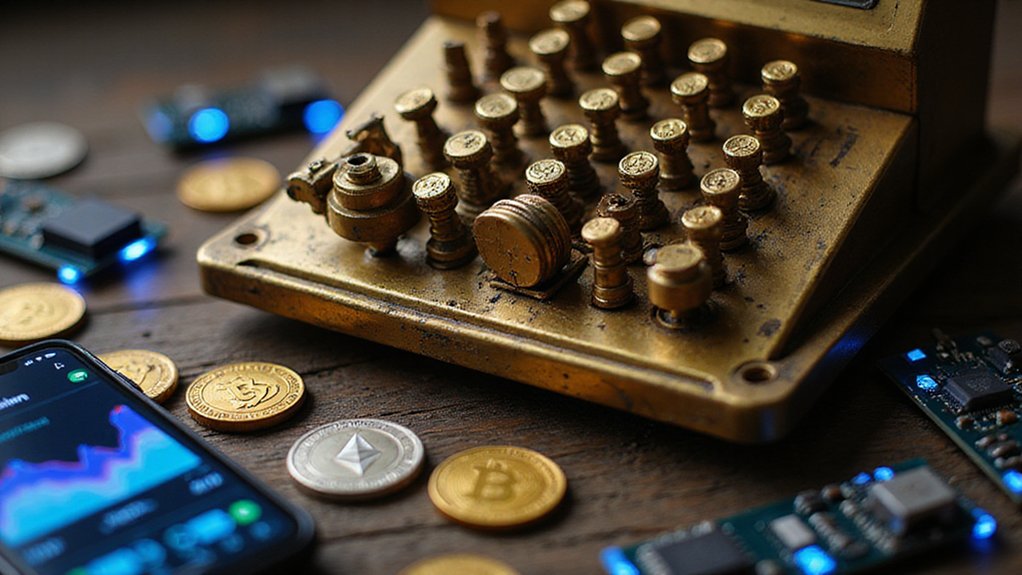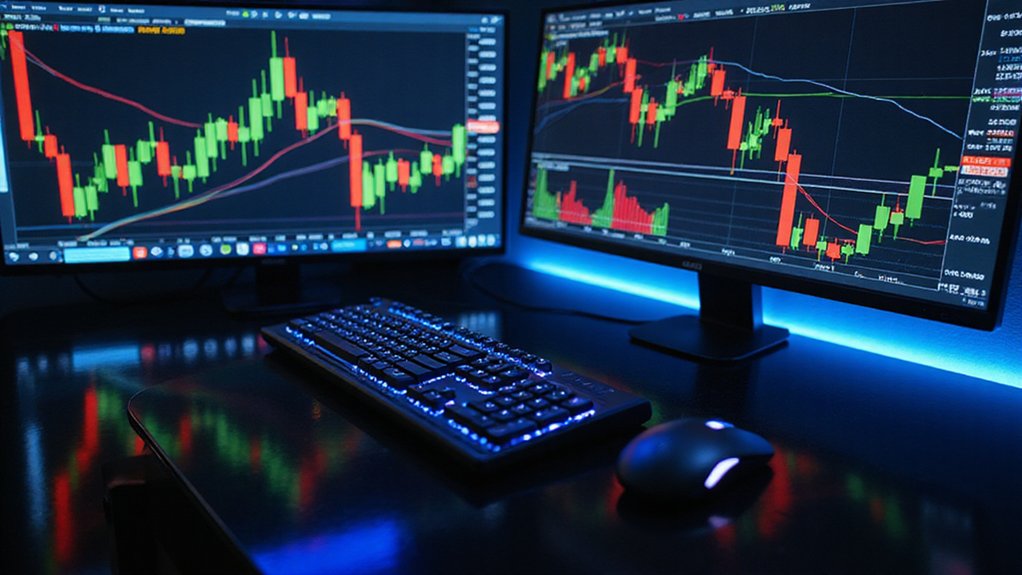Moonriver functions as Kusama’s Ethereum-compatible parachain, serving dual roles as Moonbeam’s experimental testing ground and a standalone blockchain for developers embracing controlled chaos. Built on Substrate, it provides full EVM compatibility, enabling seamless smart contract migration from Ethereum while leveraging Kusama’s shared security model. The MOVR token handles transaction fees, governance, and collator incentives within this deliberately unstable environment designed for rapid iteration. Those seeking deeper mechanics might find the technical architecture surprisingly sophisticated.

In the labyrinthine world of blockchain experimentation, Moonriver emerges as something of a paradox—a “canary network” that tests the waters for its more polished sibling, Moonbeam, while maintaining its own distinct ecosystem within Kusama’s parachain architecture. This community-driven blockchain operates as both proving ground and standalone platform, embodying the peculiar crypto tradition of building networks specifically to break things before they matter.
Built on Substrate’s modular framework, Moonriver provides an Ethereum Virtual Machine (EVM) compatible environment that allows developers to port their smart contracts with minimal fuss—a feature that has become increasingly valuable as gas fees on Ethereum proper continue their stratospheric ascent. The platform’s Web3-compatible APIs enable seamless integration with familiar tools like MetaMask, fundamentally creating a bridge between Ethereum’s established ecosystem and Kusama’s experimental playground. The network’s smart contracts automatically execute agreements when predetermined conditions are met, removing the need for intermediaries to oversee transactions.
The MOVR token serves multiple functions within this architecture, functioning as both the network’s native currency for transaction fees and smart contract execution, and as the governance mechanism through which stakeholders can propose and vote on protocol changes. Collators—the network’s equivalent of validators—earn MOVR incentives for block production, creating economic alignment between security providers and token holders. Beyond these core functions, MOVR enables gas metering for efficient smart contract execution across the network.
What distinguishes Moonriver from the crowded field of EVM-compatible chains is its strategic positioning within the Polkadot/Kusama ecosystem. Rather than operating as an isolated blockchain, it functions as a parachain, benefiting from Kusama’s shared security model while maintaining its own governance and economic policies. This arrangement provides developers access to a high-speed, scalable environment without sacrificing the interoperability features that have become increasingly important in DeFi applications. Moonriver operates on approximately 100 available parachain slots that can be secured through competitive auctions for fixed periods.
The platform supports various blockchain bridges (including Chainbridge, Ren, and Interlay) that facilitate token transfers and messaging across different networks, while infrastructure integrations with services like Chainlink and The Graph provide vital oracle and indexing capabilities.
For developers, Moonriver offers a cost-effective testing environment where new applications can be deployed and stress-tested before migrating to the more conservative Moonbeam network on Polkadot—assuming, of course, they survive the experimental rigors of Kusama’s deliberately chaotic ecosystem.
Frequently Asked Questions
What Is the Current Price of Moonriver Crypto?
Moonriver (MOVR) currently trades at approximately $5.45, having weathered recent volatility between $5.12 and $5.64 over the past few days.
The token maintains roughly $6.21 million in daily trading volume—respectable liquidity for a cryptocurrency ranking around #489 in market capitalization.
Recent monthly performance shows a concerning -22.59% decline, though short-term forecasts suggest stabilization near current levels through early July 2025.
How Can I Buy Moonriver Tokens?
Acquiring MOVR tokens requires traversing the Kusama ecosystem’s characteristically fragmented landscape.
Centralized exchanges like Kraken offer straightforward fiat-to-MOVR pairs, while decentralized alternatives demand cross-chain gymnastics through bridges and parachain DEXs.
MetaMask integration simplifies wallet management, though users must configure Moonriver network parameters manually—a delightfully Byzantine process for newcomers.
The prudent approach involves funding established exchanges with major cryptocurrencies, then executing swaps while monitoring slippage and network congestion across parachain infrastructure.
Which Wallets Support Moonriver Cryptocurrency?
Moonriver enjoys robust wallet support across multiple platforms, naturally benefiting from its EVM compatibility.
Hardware options include Ledger’s entire lineup (Nano X, S Plus, Stax) and Trezor devices, while software solutions encompass MetaMask, Enkrypt, MyCrypto, and Rabby.
Mobile users can leverage Trust Wallet and Bit2Me’s multi-currency platform.
Browser extensions, particularly MetaMask, dominate the space—though one wonders if users truly grasp the security implications of their chosen storage methods.
What Are the Risks of Investing in Moonriver?
Moonriver presents the quintessential crypto investment trifecta of doom: extreme volatility (forecasts swing from -27% drops to $1000 peaks), regulatory uncertainty that could obliterate adoption prospects, and technological risks inherent to maintaining competitive blockchain infrastructure.
Market corrections, speculative bubbles, and potential liquidity crunches compound these hazards. Investors face the delightful possibility of watching their capital evaporate through pump-and-dump schemes or macroeconomic shocks—because what’s cryptocurrency without existential dread?
Is Moonriver Crypto a Good Long-Term Investment?
Moonriver presents a compelling long-term thesis—assuming one believes DeFi adoption will continue its meteoric rise and cross-chain interoperability becomes indispensable.
The Kusama integration provides legitimate technological advantages, while price forecasts ranging from conservative $1.43 to ambitious $80 reflect the asset’s inherent uncertainty.
However, regulatory headwinds and fierce competition from established networks suggest investors should temper expectations with prudent risk management strategies.









